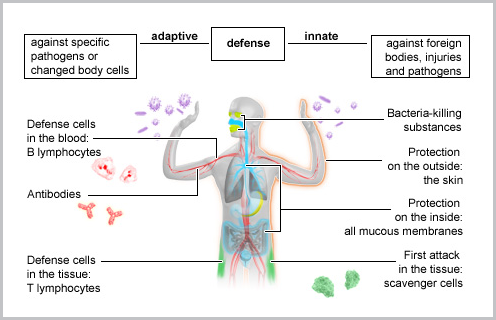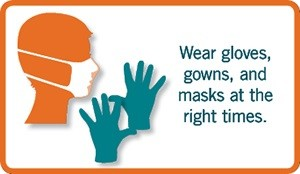
BLOOD AND THE LYMPHATIC SYSTEM
Objectives:
Watch this video as an introduction to the lymphatic system.
Watch this video as an introduction to the immune system.
Introduction
The lymphatic system consists of a network of lymphatic vessels, lymph nodes, the spleen, the thymus gland, and the tonsils. The lymphatic system consists of a network of lymph vessels that pick up excess tissue fluid, cleanse it, and return it to the circulatory system. It also picks up fats that have been absorbed by the digestive system. The immune system fights disease and infection.
The following power point will teach you about the lymphatic system and introduce you to the immune system.
Click here to open and learn about the “The Lymphatic System and Immunity.”
Figure 1 |
 |
Standard Precautions
Hospitals and other healthcare settings contain a large number of infective pathogens. Patients and healthcare workers are exposed to each other’s pathogens and sometimes can become infected. An infection acquired in this manner, as a result of hospital exposure, is referred to as a nosocomial infection or a healthcare- associated infection (HAI). Nosocomial infections can spread in several ways.
Cross-infection occurs when a person, either a patient or health care worker, acquires a pathogen from another patient or healthcare worker. Reinfection takes place when a patient becomes infected again with the same pathogen that originally brought him or her to the hospital. Self-inoculation occurs when a person becomes infected in a different party of the body by a pathogen from another part of his or her own body—such as intestinal bacteria spreading to the urethra.
 |
**Complete Exercise 1 - Click here for the printable reading.
![]() Click on the check mark to evalutate your work!
Click on the check mark to evalutate your work!
Terminology
Word Pars Used to Build Lymphatic and Immune System Terms
The following lists contain the combining forms, suffixes, and prefixes, used to build terms in unit 9.
Click here to view Table 1 - Combining Forms. |
| Click here to view Table 2 - Suffixes. |
Click here to view Table 3 - Prefixes. (Quizlet link is with table 4)
| Click here to view Table 4 - Adjective Form of Anatomical Terms. |
| Click here to view Table 5 - Pathology Terms of the Immune System. |
**Complete Exercise 2 - Click here for the printable reading.
![]() Click on the check mark to evalutate your work!
Click on the check mark to evalutate your work!
| Click here to view Table 6 - Diagnostic Terms of the Immune System. |
| Click here to view Table 7 - Therapeutic Terms of the Immune System. |
**Complete Exercise 3 - Click here for the printable reading.
![]() Click on the check mark to evalutate your work!
Click on the check mark to evalutate your work!
| Click here to view Table 8 - Pharmacology Terms of the Immune System. |
| Click here to view Table 9 - Abbreviations of the Immune System. |
**Complete Exercise 4 - Click here for the printable reading.
![]() Click on the check mark to evalutate your work!
Click on the check mark to evalutate your work!